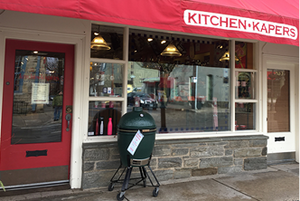Steam vs Pump Espresso Machines
Despite the enduring popularity of espresso and espresso-based drinks such as cappuccinos and lattes, many are still less than certain about what makes espresso the drink that it is. Contrary to popular belief, espresso is not any specific type of bean, blend, roast or grind; though these factors are important ones that will effect the flavor and character of any coffee beverage. Instead, espresso is defined by the process of quick, pressurized brewing performed by specialized espresso brewers.
These specialized brewers- espresso makers- need to get several things right to produce good espresso, but the key jobs of a good espresso maker are:
a) Water Temperature (about 200°F)
b) Adequate pressure (specifically 9 "bars" of pressure) to force heated water through a properly packed coffee "puck" or "pod"
c) Extraction time (25 seconds is a fair rule of thumb) which represents the total time it takes to force all the water through the coffee "puck" or "pod"
If a brewer can't quite hit these parameters, it will certainly still produce coffee, though that coffee may not possess the flavor and aroma experience that espresso drinkers love.
The two most prominent type of electric espresso machines on the market are Steam Brewers and Pump Brewers. They differ significantly in design, performance, and price.
Electric Steam Brewers
The first type of brewer uses steam pressure, typically generated by an internal boiler. Basically, it can be considered an electric version of the beloved stovetop espresso maker, or "Moka Pot". Water is brought to a boil in a sealed tank, creating steam pressure which forces the often boiling-hot water through a bed of finely ground coffee (usually packed within a portafilter). From there, the resulting brew simply streams into your cup or small pot below, until the brewing is finished. This type of brewer, if equipped, can also use the same boiler system to send steam to a frothing wand so you can add steamed milk to make cappuccinos and other beverages.
In the strictest sense, it is fair to say that Electric Steam Brewers are not capable of producing a true cup of espresso, because steam only creates 1.5 bars of pressure which falls well short of the 9 bars needed for a good extraction and substantial crema. Also, these designs often make water hotter than the ideal temperature range, resulting in bitterness and higher levels of acidity. But these brewers can make a good and strong shot of coffee, though it may take some work on your part to get the grind just right for your brewer. And Electric Steam Brewers are a very affordable way into home-made espresso, although they seem to have a diminishing presence in the US market.
Pump Espresso Machines
The pump-driven espresso maker is a far superior design, because it is equipped with separate systems for generating the required pressure and for controlling water temperature. So, not only can they ensure the pressure needed, but they can dial in the ideal water temperature range for a full and balanced extraction. This huge selection of brewers range in cost from about $200 to many thousands of dollars (particularly for commercial models). These machines generate brewing pressure via an electric pump that can handily produce the 9 bars (and more) of pressure to produce full-flavored extractions with thick, rich crema. And water is precisely heated to the desired brewing temperature by one boiler, thermoblock or thermocoil heating system. The same heating system can also operate at a higher temperature to serve a steam wand for frothed milk after the brewing is done, or it may even be equipped with an additional heating system for steam and hot water on demand. These differences along with different levels of overall build quality and features result in a wide variety of models with their own capabilities and a wide range of price points.
Pump-driven espresso makers are typically classified as being semi-automatic, automatic or super automatic.
Semi-Automatics require some effort on the part of the operator to grind, measure out and tamp the coffee and control the volume of water. Basically the semi-automatic machine just heats the water and pumps it through. You have the control to tell it when to stop, either by a manual switch or through a programmable function that you have to set up. While many good semi automatic espresso makers, such as the Capresso Ultima Pro, are more affordable examples of a pump machine, they can also reach quite expensive build qualities and are often preferred by hands-on enthusiasts because they allow knowledgeable users to have more control over the process. With semi-automatic and automatic machines, you can use any coffee you like, but the size of the grind and way that it is tamped will affect the quality of the shot. Espresso pods that fit standard size portafilters are available for purchase if you prefer not to bother with grinding, dosing and tamping.
Automatic Espresso Machines require less interaction. The operator still has to grind, dose and tamp the coffee, but an internal sensor controls the volume of water and will stop pumping automatically once the correct volume is reached. Automatic machines may also include pre-programmed settings for longer or shorter extractions or the ability to program your own functions. In any case, it will stop the shot automatically. Most automatic machines will include a steam wand to heat and froth milk and can include a whole range of additional features, functions and settings. A very notable and increasingly popular segment of this type are brand-specific automatic pump machines that exclusively use proprietary coffee pods. A very popular example of this type would be the Nespresso line. The pods are specifically dosed and packed to make a variety of coffees or espresso, one cup at a time. The machines are supremely convenient and produce very good coffees with rich crema at the push of a button. And while they do require that you use the proprietary pods, they save you from needing a grinder, measuring and tamping for every cup and the clean up is as easy as tossing the spent pod (which is actually 100% recyclable). Since these streamlined machines typically aren't made with steam functions, a separate milk frother will be needed to make cappuccinos and lattes.
Finally, there are the Super Automatic Espresso Machines. As you will have guessed, they require the least effort from the user and will automatically measure, grind and tamp the coffee beans, extract the shot and stop when it's done. They usually self clean as well, and require only occasional attention to fill ingredients or empty spent grounds. Models range from compact designs like the Krups Falcon to full-blown Coffee Centers like the Jura-Capresso line. All you have to do is push a button. Many have programmable settings, giving you the option to tailor the coffee to your own tastes. This type generally carries the heaviest price tag, especially when feature-rich. But they allow you to use whatever coffees you like, they are usually very customizable and they provide a variety of excellent espresso and coffee drinks on demand at the push of a button.




